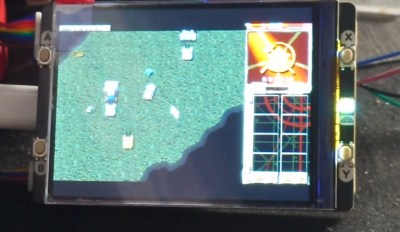A couple of months back, Electronic Arts did something uncharacteristically benevolent and released several of the old Command and Conquer games under the GPLv3. Logically, we knew that opened the doors up to the games being ported to new operating systems and architectures, but we admit that it was still a little surprising to see Command and Conquer: Red Alert running on the Raspberry Pi Pico 2.
[Charlie Birks] documented the process of getting the 1996 game up and running on the microcontroller in a series of Mastodon posts spanning a few days in March. Seeing the incremental progress made each day makes for interesting reading, as he moves from the game just barely starting up to being able to complete missions and eventually even get multiplayer going between two Picos.
 As [Charlie] clarifies, he’s technically using the Pimoroni Pico Plus 2 W, which takes the RP2350B from the official Pico 2, adds 8 MB of PSRAM, and bumps the onboard flash to 16 MB. The upgraded specs and an SD card are required to get the game running, as content that would have originally been held in RAM on the computer must instead be pulled from flash.
As [Charlie] clarifies, he’s technically using the Pimoroni Pico Plus 2 W, which takes the RP2350B from the official Pico 2, adds 8 MB of PSRAM, and bumps the onboard flash to 16 MB. The upgraded specs and an SD card are required to get the game running, as content that would have originally been held in RAM on the computer must instead be pulled from flash.
For an even more streamlined experience, he eventually slaps the Pico Plus 2 W into the Pimoroni Pico VGA Demo Base — which provided not only an integrated SD card slot, but (as the name implies) VGA output.
It’s still early days, but [Charlie] has been pushing all of his code changes into his fork of Red Alert on GitHub for anyone who wants to play along at home. If you get his fork compiled and running on your own Pico, we’d love to hear about it in the comments.

















